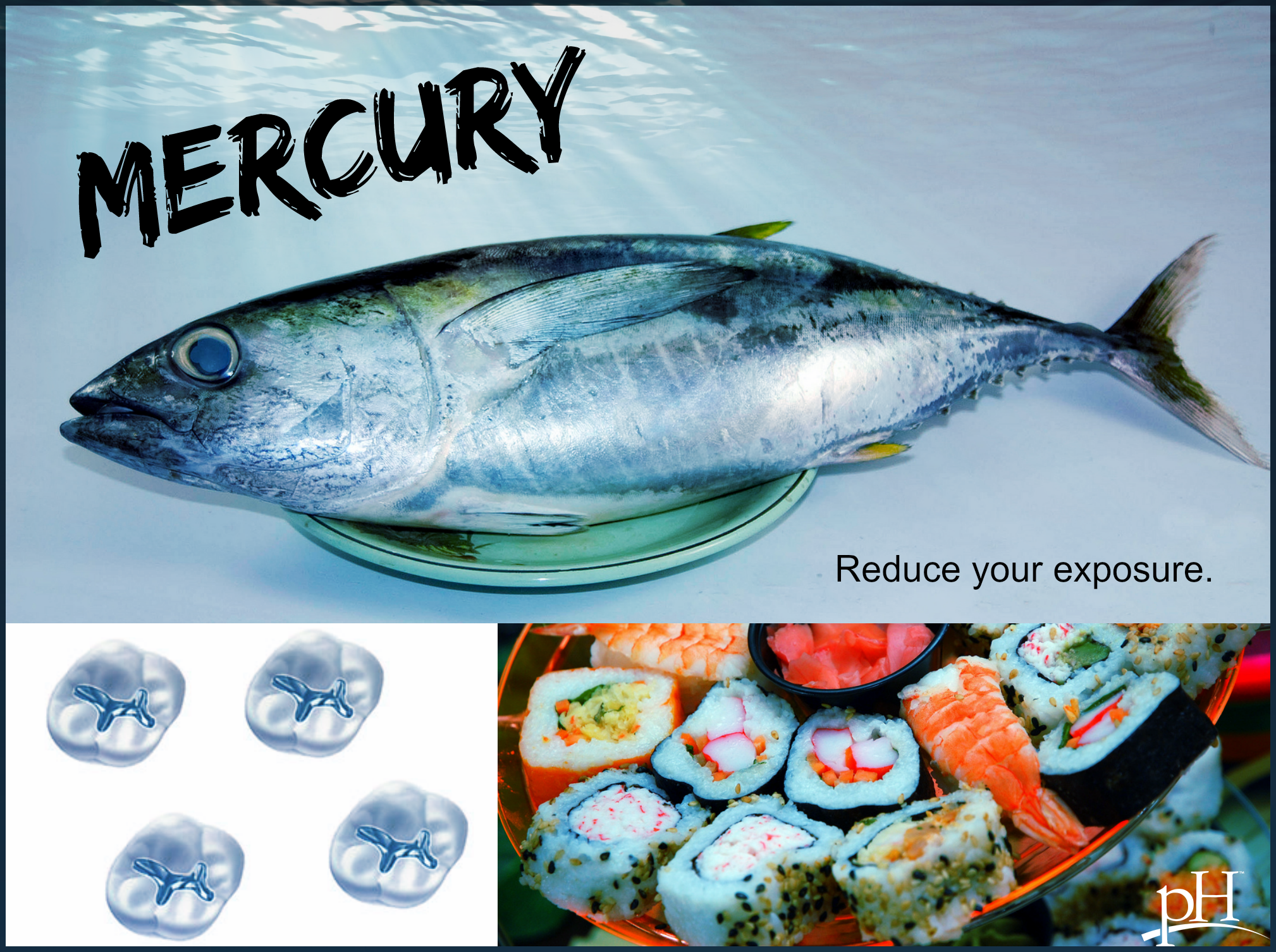Know the facts on mercury to reduce your exposure
11 years ago | Mercury
Photo credits: top:Hafiz Issadee, bottom left: FDA, bottom right: Steve Snodgrass. Used with permission under Creative Commons license, altered.
By pH health care professionals
Many of us are old enough to remember mercury thermometers. The silvery liquid slid beguilingly up and down the thermometer, telling mom whether you were faking your sudden test-day illness or not. But mercury thermometers soon disappeared from existence — the incidents of broken glass and exposure to a toxic metal made their use too dangerous. However, mercury is still all around us and in our bodies, and it’s not a good thing.
Review these key facts so you can decrease your exposure to mercury and proactively protect your health.
What is mercury?
Mercury is a naturally occurring element that is found in air, water and soil. It is considered a toxic metal, or “heavy metal,” because it negatively affects people’s health. The World Health Organization considers mercury one of the “top ten chemicals or groups of chemicals of major public health concern.”
Where are high levels of mercury found?
High levels of mercury exists in ocean sediment, which is taken up by tiny fish and other sea life. As larger fish consume the smaller fish, the mercury adds up in higher and higher amounts up the food chain. This is why pregnant women are advised to avoid sushi (apart from the risk of infection from raw fish). Large, predator fish like mackerel and tuna tend to have very high mercury concentrations, and even the occasional sushi or fish eater’s mercury levels can be above normal upon testing.
Fish isn’t all we have to worry about. Mercury amalgam dental fillings leach small quantities into the mouth daily, meaning your levels could be abnormal even if you don’t eat fish.
What are some of the risks of mercury exposure?
- High levels of mercury in pregnant women can lead to neurological problems in the baby, making mercury a prime concern of obstetricians and pediatricians.
- Hormonal and fertility disorders.
- Common subjective complaints such as fatigue, anxiety, depression, weight loss, memory loss and difficulty concentrating are all symptoms of low-grade chronic mercury exposure.
- Hypertension, coronary heart disease, myocardial infarction and cardiac arrhythmias. In fact, the Journal of Clinical Hypertension recommends that mercury toxicity be evaluated in any patient with hypertension, coronary heart disease, cerebral vascular disease, cerebrovascular accident or other vascular disease.
- Magnesium, copper, iron, zinc and iodine deficiencies. These deficiencies usually occur because mercury can displace these minerals in the body.
How do you measure mercury?
Taking a sample of hair provides a surprisingly accurate measure of the mercury “load” in the body. A simple urine and blood test can reveal mercury excess as well. At Proactive Health Labs, we offer laboratory testing for all toxic heavy metals, including mercury.
You can control and change your exposure to toxic metals through diet and your environment. So get your toxic metal levels checked to see if you need to make some lifestyle adjustments.
Schedule your pH Toxins test online or by calling our Santa Monica location at 855-PHLABS1.
Enjoy Your Healthy Life!
The pH professional health care team includes recognized experts from a variety of health care and related disciplines, including physicians, attorneys, nutritionists, nurses and certified fitness instructors. This team also includes the members of the pH Medical Advisory Board, which constantly monitors all pH programs, products and services. To learn more about the pH Medical Advisory Board, click here.







